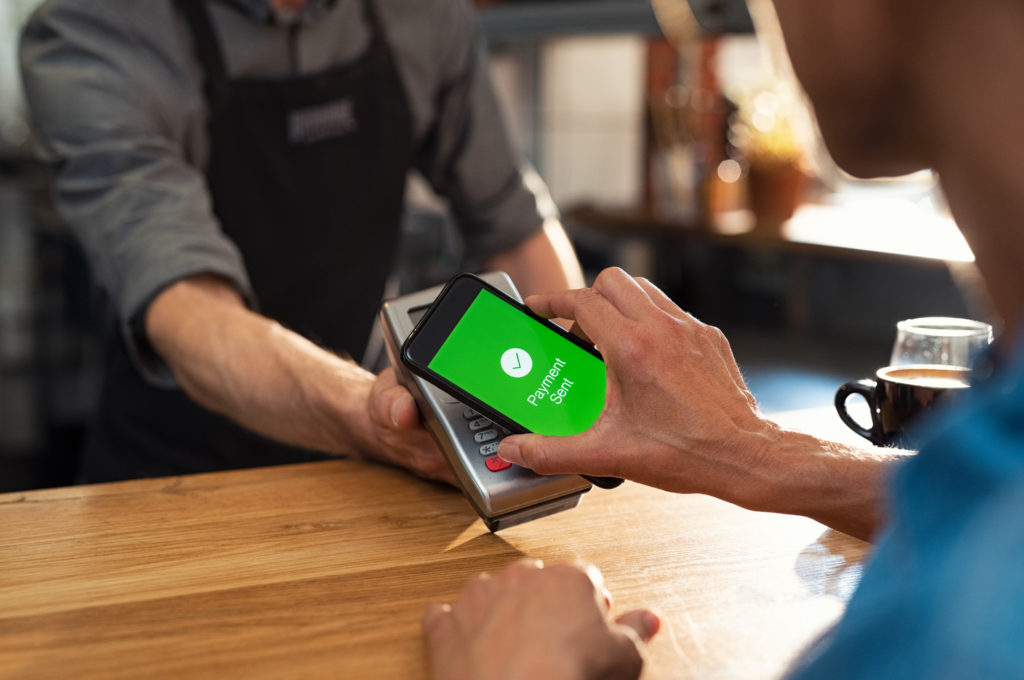The Evolution of Payments
The Strategic nature of Payments
Payments play a vital role in customer-brand interaction. It completes a transaction and is a marker for successful customer conversion. Despite its vital role, payment is often overlooked by brand marketers as a customer touchpoint. With technological improvements affecting how people make purchases and conduct basic banking tasks, one needs to look at things circumspectly. Join us on this journey.
The Growth of Mobile Payments & Banking
It would be ignorance to deny the fact that the adoption of mobile payments and banking is accelerating. Per research, most 40% of U.S. consumers use at least one digital payment medium. According to Mintel, more than 60% of consumers use mobile banking apps regularly. Consumers in the U.S. are prepared for the way they handle their finances.
The latest TSYS US Consumer Payment study estimates that about 51% of respondents indicated an interest in using a mobile wallet to make in-store purchases instead of a credit or debit card, which marks an increase of 11% from 2016. 68% of those who have started using mobile payments said they expect to use this technology to make at least half of their in-store purchases within two years.
The interest of consumers has a ripple effect; merchants also come on board. As of December 2017, most North American retailers were already accepting customer payments through methods such as Android Pay and PayPal, among others. Also, an additional 15% were planning on accepting the payment method within the next year. In January, an Apple executive claimed that Apple Pay was accepted at one out of every two retailers in the U.S.
China’s Impressive mobile System
As impressive and promising as that of the USA’s acceptance of online payment, it plays second fiddle to China. In 2017, mobile payment transactions in China reached a record 81 trillion yuan (about $12.8 trillion). This dwarfed the estimated $49.3 billion in total mobile transactions in the United States in the same year.
Owing to the near-universal acceptance of mobile payments and spreading smartphone usage, the leading mobile payment apps in China — Alipay and WeChat Pay — have swiftly broadened their scope and began using formidable platforms that integrate with all kinds of eCommerce opportunities and offline services. By implication, whether you’re getting a ride from Didi, shopping for a new shirt on Tmall, paying the home electricity bill, or booking a spa appointment, Chinese consumers can simply go to either the Alipay app or WeChat and handle the tasks via the various applets available on these two platforms. This total coverage further influences the change in consumer behavior, making lots of Chinese consumers look beyond credit cards and accept mobile payment as their default payment method in everyday life.
The Disintermediation of Banks
Making mobile payments platform based disintermediates banks and credit card companies from consumers. As mobile payment apps become all-encompassing service portals, they control the user experience and hijack the customer relationship that banks and credit card companies used to own.
Indeed, some digital payment companies have started to leverage their direct relationship with users to expand into offering basic banking services such as checking and savings accounts. Alipay, for example, took advantage of the full-scale financial services its parent company Ant Financial offers to integrate with a wide spectrum of financial services, such as money market investment (Yu’e Bao), insurance service (ZhongAn), the credit rating (Sesame Credit), and personal credit line (Ant Micro Loan). With an interest rate higher than bank accounts deposit rate, more and more Chinese shoppers choose Yu’e Bao as a virtual wallet to park their money instead of saving accounts.
In the U.S., Apple is reportedly in talks with Goldman Sachs to create an Apple Pay-branded credit card as it looks to extend the reach of its payment system. Amazon also has an extended history of encroaching on Wall Street’s turf, including offering virtual checking accounts to appeal to younger customers and those without bank accounts. Even for instalment payments, digital financial upstart Affirm is being integrated into the checkout process of many e-commerce sites and pushing out banks and credit card firms by integration.
Conclusion
Alas, payments both local and international have come to stay. At Simplify Synergy, our mission is to simplify payments for businesses and to connect business owners to customers from anywhere in the world. Our solution utilises simplified APIs that ensure seamless integrations with third-party platforms and payment methods. Our Virtual Payments solution streamlines payment and reconciliation systems, lowers costs, reduces risks, and improves the overall consumer and product experience. ZeusPay is built with state-of-the-art technology that provides a secure transaction environment for the users and empowers organizations with tools required to conduct their businesses effectively.
We provide business solutions for business owners, so you can focus on building.




